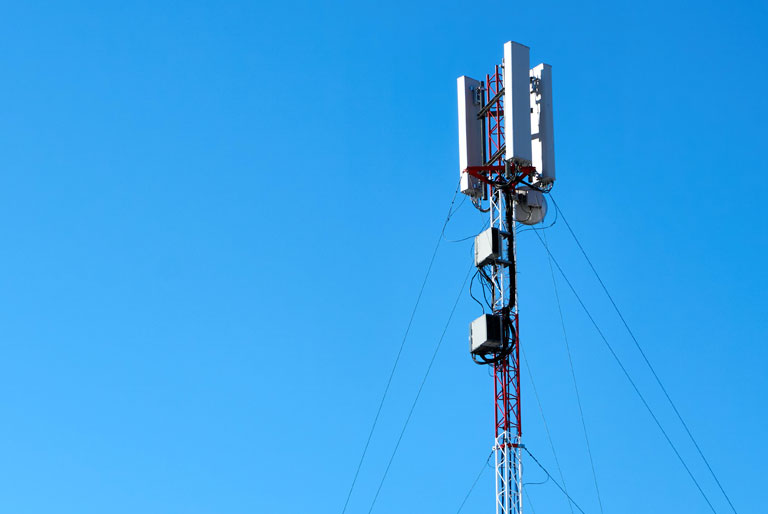PLDT wireless arm Smart Communications recently fired up the LTE site in Brgy. San Simon to help ensure that there is Smart coverage in the area, empowering frontliners in the battle against the pandemic.
For Dr. Andresul Labis of the Northern Mindanao Medical Center (NMMC) in San Simon, Cagayan de Oro City, connectivity remains to be as important as ever as the country faces rising COVID-19 cases, especially for facilities located away from city centers.
“It enables our team to stay connected despite being away from downtown,” said Dr. Labis, who heads the NMMC-Center for Emerging and Reemerging Infectious Diseases, also known as the San Simon facility.
Located in the outskirts of the city, the San Simon facility was built by the Cagayan de Oro LGU to help manage its COVID-19 cases. It now serves as a temporary treatment monitoring facility for mild and moderate cases of COVID-19 and as step down facility for patients admitted at NMMC.
“The internet plays a vital role in our work, especially in the dissemination of information, sharing of documents and faster communication. With ECQ in place in Cagayan de Oro, connectivity is even more vital in order to avoid face-to-face meetings, so we always use our Prepaid Home Wifi to attend Zoom meetings regularly. It has become part of my life now because of the pandemic,” Dr Labis added.

As part of the companies’ sustained efforts to expand network coverage, the country’s only integrated telco PLDT and its wireless subsidiary Smart have ramped up the deployment of their LTE and 5G networks nationwide.
As of end-June 2021, Smart had increased the number of its base stations to over 68,500, including more than 4,500 LTE base stations deployed in the first half of the year alone. To date, Smart has also fired up 5G in over 4,000 sites across the country. Smart’s network serves the most number of data users in the Philippines at 39.5 million as of end-June.
SEE ALSO: PLDT teams up with HUGS, champions quality healthcare for Filipinos overseas
Supporting Smart’s mobile networks is PLDT’s fiber network. In the first half of the year, PLDT has added 95,000 kilometers to its nationwide fiber footprint, further expanding the country’s most extensive fiber infrastructure to more than 524,000 kilometers as of end-June 2021.
“This is part of our efforts to ensure that more Filipinos have access to quality connectivity, especially our medical frontliners who need our services to send and receive information, stay in touch with patients and fellow frontliners safely, and communicate with their loved ones,” said Mario G. Tamayo, Head of Technology at PLDT and Smart. “Reliable connectivity also provides the necessary boost to the country’s vaccine rollout, as we try to get as many of our countrymen vaccinated as soon as possible.”
Connectivity for teleconsultation, vaccine rollout
Connectivity is also essential to teleconsultation initiatives like Cebu’s COVID-19 TelegaBai, which is in partnership with Philippine College of Physicians-Central Visayas Chapter. Through this initiative, which provides SIMs and load assistance, doctors and medical health professionals designated in provincial and district hospitals can harness Smart’s fast and reliable network in managing severe or critical COVID-19 cases.
Smart has also supported NMMC’s Teleconsultation efforts since the start of the pandemic last year by providing the hospital smartphones and load. The NMMC Telekonsulta Service targets noncritical cases and aims to provide a venue for patients to directly consult medical professionals through their mobile phones.
The internet also plays an integral role in the ongoing nationwide vaccine rollout, supporting LGUs in their bid to get as many of their constituents registered via online platforms.
PLDT and Smart’s relentless push to provide connectivity for all is aligned with the group’s long-standing commitment to help the Philippines attain the UN’s Sustainable Development Goals, particularly SDG #9: Industry, Innovation, and Infrastructure and SDG #11: Sustainable Cities and Communities.





